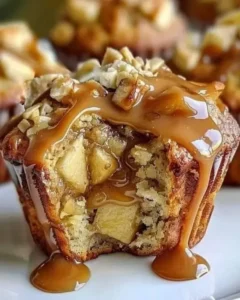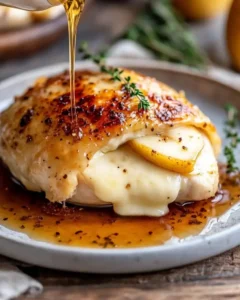Irresistible Chocolate Peanut Butter Cake: A Decadent Delight
The Irresistible Chocolate Peanut Butter Cake is a fusion of rich chocolate and creamy peanut butter, making it a divine treat for any chocolate lover. This heavenly cake combines deep, luscious flavors with a delightful texture that melts in your mouth. With a striking appearance and aroma that fills your kitchen, this dessert is sure to be a hit at any gathering. Whether you’re celebrating a special occasion or simply indulging your sweet tooth, this chocolate peanut butter cake offers a luxurious experience that delights the senses.
Quick Recipe Highlights
- Flavor Profile: The perfect balance of rich chocolate and creamy peanut butter, enhanced by a hint of vanilla and a touch of saltiness to complement the sweetness.
- Texture: A moist, tender crumb with a smooth, creamy frosting that glides effortlessly onto your fork.
- Aroma: The comforting aroma of warm chocolate and roasted peanuts filling your kitchen, tantalizing your taste buds even before the first bite.
- Visual Appeal: A stunning and elegant layer cake adorned with swirls of frosting and a sprinkle of chocolate shavings for an aesthetically pleasing presentation.
- Skill Level Needed: Requires a moderate skill level to effectively create multiple layers and achieve a smooth frosting finish on the cake.
- Special Equipment: A stand mixer for efficient batter preparation and a spatula for meticulous frosting application.
Recipe Overview
- Difficulty Level: This recipe reaches a moderate difficulty due to its multi-step nature, including preparing cake layers, frosting, and assembly. However, clear instructions facilitate ease.
- Category: Suitable for dessert lovers, it’s a staple cake recipe for celebratory moments or indulgent dinners.
- Cuisine: While primarily American, it reflects influences from popular combinations worldwide, such as chocolate and nuts.
- Cost: A moderately priced recipe that combines everyday ingredients, easily sourced from most grocery stores.
- Season: A versatile chocolate peanut butter cake that remains a popular choice year-round, perfect for both summer parties and cozy winter gatherings.
- Occasion: A highly adaptable cake, equally suited for birthdays, anniversaries, or casual get-togethers with friends and family.
Why You’ll Love This Recipe
This irresistible chocolate peanut butter cake is a feast for the senses. With its perfectly balanced flavors, this cake offers an addictive combination of smooth peanut butter and rich chocolate, ideal for dessert enthusiasts who savor decadence. Beyond its unparalleled taste, the cake boasts a moist texture that makes each bite a melt-in-your-mouth delight. The preparation, though moderately challenging, is manageable with a clear set of instructions—offering culinary satisfaction without overwhelming complexity.
From a nutritional perspective, ingredients like cocoa provide antioxidants, and peanut butter adds protein, making it a dessert that offers some redeeming health qualities. Its ultimate allure lies in its ability to act as a centerpiece at any festive table, delivering not only exquisite flavor but also an undeniably attractive presentation that invites smiles. Moreover, its cost-effectiveness ensures accessibility, allowing indulgence without financial burden.
Historical Background and Cultural Significance
Peanut butter and chocolate have long been revered as a classic combination in American desserts. Born out of a love for rich, creamy sweets, peanut butter was first introduced into confections in the early 20th century. The development of the chocolate peanut butter cake represented the culmination of generations perfecting the marriage of these flavors, now ingrained in American culinary culture.
This cake embodies more than just deliciousness; it is a symbol of joyous occasions and shared happiness. Its evolution reflects the growing desire to experiment with textures and flavors, challenging traditional culinary boundaries. Today, the chocolate peanut butter cake remains a canvas for innovative bakers to layer with other flavors or adapt for modern dietary needs, testifying to its remarkable adaptability.
Ingredient Deep Dive
When selecting cocoa powder for this cake, opt for high-quality unsweetened cocoa to ensure rich chocolate flavors. Cocoa contains valuable antioxidants, which add a small health benefit to your indulgent dessert. To store, ensure it’s kept in a cool, dark pantry sealed tightly to preserve its flavor. For substitutions, consider using an equal amount of Dutch-processed cocoa for a smoother taste, adjusting baking soda in the recipe accordingly.
Peanut butter, the star ingredient, infuses the cake with its creamy consistency and distinct nutty taste. It’s best chosen in creamy form for a smooth frosting texture; however, chunky versions add an interesting texture contrast. Store peanut butter in a dry pantry, or refrigerate for extended freshness. Sunflower seed butter or almond butter can serve as excellent peanut butter substitutes for an allergy-friendly variation.
Common Mistakes to Avoid
- Using low-quality cocoa can result in a lackluster chocolate flavor and a dull cake appearance. Invest in premium cocoa for the best results.
- Overmixing the batter can lead to dense cake layers. Mix until ingredients are just combined to preserve the cake’s tender crumb.
- Neglecting to scrape down the bowl can cause uneven incorporation of ingredients. Ensure all components are fully blended for consistent flavor.
- Baking at incorrect temperatures often results in uneven layers. Verify your oven’s temperature with a thermometer before baking.
- Frosting the cake while layers are too warm can cause melting and a messy presentation. Allow layers to cool completely before assembly.
- Skipping the crumb coat for the frosting can lead to a cake covered in crumbs, disrupting its smooth finish. Always apply a thin base layer of frosting first.
- Using cold ingredients in the batter can hinder proper integration. All ingredients should be at room temperature for optimal blending.
- Improperly storing leftovers can dry out your cake. Seal well in an airtight container to maintain moisture and flavor.
Essential Techniques
Mastering the art of frosting is key to an attractive chocolate peanut butter cake. A crumb coat, the first thin layer of frosting, acts like glue to keep crumbs in place. Chill the cake after the crumb coat to set the frosting, allowing for a flawlessly smooth final coat. This technique prevents crumbs from appearing in the outer layer, ensuring your cake looks as polished as possible.
Baking perfectly even cake layers requires attention to detail with batter distribution and oven rotation. Use a kitchen scale to ensure equal batter amounts for each pan, and rotate pans halfway through baking for uniform rise and texture. Visual cues like when the cake springs back upon touch or a clean toothpick emerge, ensuring the layers are perfectly baked and ready for assembly.
Pro Tips for Perfect Irresistible Chocolate Peanut Butter Cake
When crafting the frosting, beat for a few extra minutes to aerate and achieve a lighter texture. This step enhances the creamy quality, making spreading a breeze. For additional depth, incorporate a pinch of espresso powder into the chocolate cake batter, intensifying the chocolate flavor. Additionally, to accentuate the flavor profile, consider a splash of vanilla extract in both the cake and frosting.
Enhancing presentation is simple with garnishes. Chocolate curls or chopped peanuts sprinkled on top add striking visual appeal and enhance texture. To ensure even frosting, use an offset spatula and an icing smoother, creating clean edges for a professional look. When serving, clean your knife between slices for sharp, neat cuts, allowing your cake to look as stunning sliced as it did whole.
Variations and Adaptations
Regional variations of the chocolate peanut butter cake incorporate local nuts, like cashews or hazelnuts, to offer alternative flavor profiles. Seasonal adaptations can include incorporating fresh fruits such as banana or raspberries into the layers or as garnish to add freshness and color.
For dietary modifications, gluten-free flour blends can replace all-purpose flour, ensuring the cake remains accessible without sacrificing quality. Explore flavor variations by adding salted caramel drizzles or incorporating a hint of chili for a spicy twist. Texture enhancements can involve using crunchy peanut butter or adding caramelized nuts for surprise elements.
Serving and Presentation Guide
For an expertly plated cake slice, employ a scatter of chocolate shavings or nuts to accentuate the cake’s colors and textures. Accompany with a dollop of whipped cream or scoop of vanilla ice cream to enrich the eating experience. Be mindful of cake temperatures; serve slightly chilled for firmer frosting—a delightful contrast against the cake’s soft crumb.
Consider portion control tips for elegant serving. Use a serrated knife dipped in hot water between cuts to slice smoothly. Individual mini cake versions or cupcakes offer a charming and practical serving option for larger gatherings, ensuring every guest receives a piece of this irresistible cake.
Wine and Beverage Pairing
The robust flavors of this cake pair nicely with a Tawny Port or a bold Cabernet Sauvignon, each enhancing the chocolate’s depth. Coffee or tea drinkers will find that cold brew coffee or robust black tea complements the richness beautifully. For non-alcoholic options, a glass of iced milk or cold almond milk creates a refreshing balance for a sweet finish.
Storage and Shelf Life
To maintain the cake’s freshness, store individual slices in an airtight container at room temperature for up to three days. Refrigerate for up to a week, ensuring each piece is sealed to preserve moisture. Freeze for up to three months; when doing so, wrap slices individually for quick thawing and easy portioning.
If signs of spoilage occur, such as an off smell or dry texture, discard to avoid loss of flavor quality. Reheat slices gently in the microwave or allow them to return to room temperature naturally for a softer, more enjoyable texture.
Make Ahead Strategies
Advance preparation can streamline your baking process significantly. Bake the cake layers a day prior, wrapping them tightly in plastic wrap and refrigerating until assembly. Prepare the frosting ahead and store it in the fridge, allowing it to come to room temperature before spreading.
Stagger the assembly into manageable steps, beginning with the crumb coat, and assemble fully before the event. Final touches, like garnishes and additional decorations, can be added last. Balance between waiting times and active preparation ensures your cake delivers optimal freshness and impact when served.
Scaling Instructions
To adjust the recipe for larger or smaller gatherings, scale the ingredients proportionally. Halve for intimate dinners or double for grand celebrations, maintaining ingredient ratios. Pay special attention to equipment size; use appropriately sized pans and extra oven space to accommodate larger batches.
Consider timing modifications, as larger cakes may require marginally longer baking times. Test with a toothpick for assurance. Proper storage containers become essential when scaling up, ensuring the cake’s integrity during transportation or temporary storage.
Nutritional Deep Dive
This chocolate peanut butter cake offers a balanced composition of macros, with carbohydrates predominating from flour and sugar, complemented by protein in peanut butter. Rich in minerals and vitamins from cocoa, this cake provides trace elements beneficial for moderate consumption.
Health considerations include mindfulness of portion sizes to manage calorie intake effectively. Given its nutrient-dense composition, this cake fits into an occasional indulgence. A nutritional analysis highlights remarkable energy provision alongside a moderate level of fats inherent in decadent desserts.
Dietary Adaptations
For gluten-free indulgence, replace all-purpose flour with a reliable gluten-free mix, observing ratios for structural integrity. A dairy-free adaptation can be facilitated by using plant-based margarines and plant milk alternatives without sacrificing creaminess.
To achieve vegan standards, egg substitutes like flaxseed meal mixed with water replace traditional eggs successfully. The chocolate peanut butter cake can also be adapted for low-carb lifestyles by using almond flour in conjunction with sugar substitutes like erythritol, offering a tailored experience without excess carbs.
Troubleshooting Guide
Common texture issues may arise from overbaking, identified by dry edges or hard layers. Ensure oven temperature accuracy, and check the cake earlier to prevent this. Balancing flavors involves precise ingredient measures; an excess of sugar versus cocoa results in uneven taste dynamics, so adhere to precise measurements for harmony.
Temperature problems can present if couverture chocolate or frosting are inconsistent in texture during preparation. Allow all ingredients to stabilize at room temperature for ease of handling. Timing concerns fix by ensuring all components are ready simultaneously; preparation missteps contribute to rushed sequences and errors.
Recipe Success Stories
Many readers report great success with this chocolate peanut butter cake, appreciating its straightforward instruction and rich payoff. Customizations are common, with creative inclusions like crushed pretzels or chocolate chips increasing flavor complexity. Pro tips have notably mentioned balancing oven use effectively, particularly when doubling the recipe for larger events.
Feedback often emphasizes the cake’s moist texture and flavorful contrast, encouraging adaptation with fruit elements or seasonal decorations. Photography tips include diverse plating styles or photographing alongside complementary desserts to enhance visual storytelling.
Frequently Asked Questions
What should I do if my frosting is too runny?
If your frosting is too runny, you can thicken it by refrigerating for 15-20 minutes until it firms. Add extra powdered sugar, one tablespoon at a time, to reach desired consistency without oversweetening.
Can I make the cake layers in advance?
Absolutely! Bake the cake layers a day ahead, wrap in plastic, and refrigerate. This scheduling eases the final frosting process and shortens prep time on the final day.
How do I avoid crumbs in my frosting?
To prevent crumbs in frosting, apply a thin crumb coat, chill the cake briefly, then frost with a thicker top coat. This step captures loose crumbs, maintaining your finish’s smoothness.
What’s the best way to transport the cake?
Transport securely by using a sealed, flat container and securing the cake. Ideally, refrigerate before moving to firm it further, minimizing slide risk.
Can I substitute the chocolate in the cake?
Different chocolates, like milk or white chocolate, adjust sweetness and texture. Adapt the sugar levels and baking times slightly to maintain structural integrity.
Does it freeze well?
Freezing is possible; slice before freezing for convenience, wrapping tightly. Layers should be well-thawed before serving to recover their soft texture.
What’s a quick fix for dry cake?
If dryness occurs, a simple syrup soak—equal parts sugar and water—can reintroduce moisture. Apply lightly across layers for an immediate impact.
Can I add a fruit layer?
A fruit layer enhances flavor—consider thin banana or strawberry slices between layers, balanced with the frosting to maintain structural integrity.
How do I achieve evenly baked layers?
For uniformity, distribute batter evenly into separate pans, use a spatula for leveling, and rotate pans during baking, ensuring consistent heat exposure.
Can I use chunky peanut butter for texture?
Chunky peanut butter adds a delightful texture contrast. Mix into frosting or as a filling between layers for added crunch without overpowering the cake structure.
Why aren’t my cakes rising evenly?
Uneven rise may result from mixed batter inconsistencies. Mix ingredients just enough for combination, avoiding overmixing which can lead to irregular rising patterns.
What if my cake is too sweet?
Balance out sweetness by incorporating a touch of salt into the frosting. Adding a layer of unsweetened whipped cream can also counteract excess sweetness, refining your dessert’s taste profile.
Additional Resources
For further exploration, consider experimenting with variations of this recipe, such as mocha-infused versions or nut-free adaptations. Technique guides offer insights into perfecting frosting application and mastering cake layering techniques, essential for ambitious bakers aiming to elevate their culinary repertoire.
Firmly understanding ingredient roles benefits ingredient substitution flexibility; mastering processes like meringue-making or caramelization opens new avenues. Equipment recommendations, including must-have electric mixers and durable bakeware, enrich your kitchen toolkit, optimizing future baking undertakings effortlessly.
Print
Irresistible Chocolate Peanut Butter Cake
Description
This decadent chocolate cake is layered with creamy peanut butter frosting, creating an irresistible treat for any occasion.
Ingredients
For the Crust:
- 1 and 3/4 cups all-purpose flour
- 3/4 cup unsweetened cocoa powder
- 1 and 1/2 cups granulated sugar
- 1 teaspoon baking soda
- 1/2 teaspoon salt
- 2 large eggs
- 1 cup buttermilk
- 1/2 cup vegetable oil
- 2 teaspoons vanilla extract
- 1 cup boiling water
- 1 cup unsalted butter, softened
- 1 cup creamy peanut butter
- 1/4 cup milk
- 3 cups powdered sugar
Instructions
1. Prepare the Crust:
- Preheat the oven to 350°F (175°C). Grease and flour two 9-inch round cake pans.
- In a large bowl, whisk together flour, cocoa powder, sugar, baking soda, and salt.
- Add eggs, buttermilk, oil, and vanilla to the dry ingredients. Mix until well combined. Stir in boiling water (batter will be thin).
- Pour the batter evenly into the prepared pans. Bake for 30-35 minutes or until a toothpick comes out clean.
- For the frosting, beat the butter and peanut butter together until smooth. Gradually add milk and powdered sugar, beating until creamy.
- Once the cakes are cool, spread the frosting over each layer, stack them, and cover the entire cake with the remaining frosting.
Notes
You can customize the seasonings to taste.





